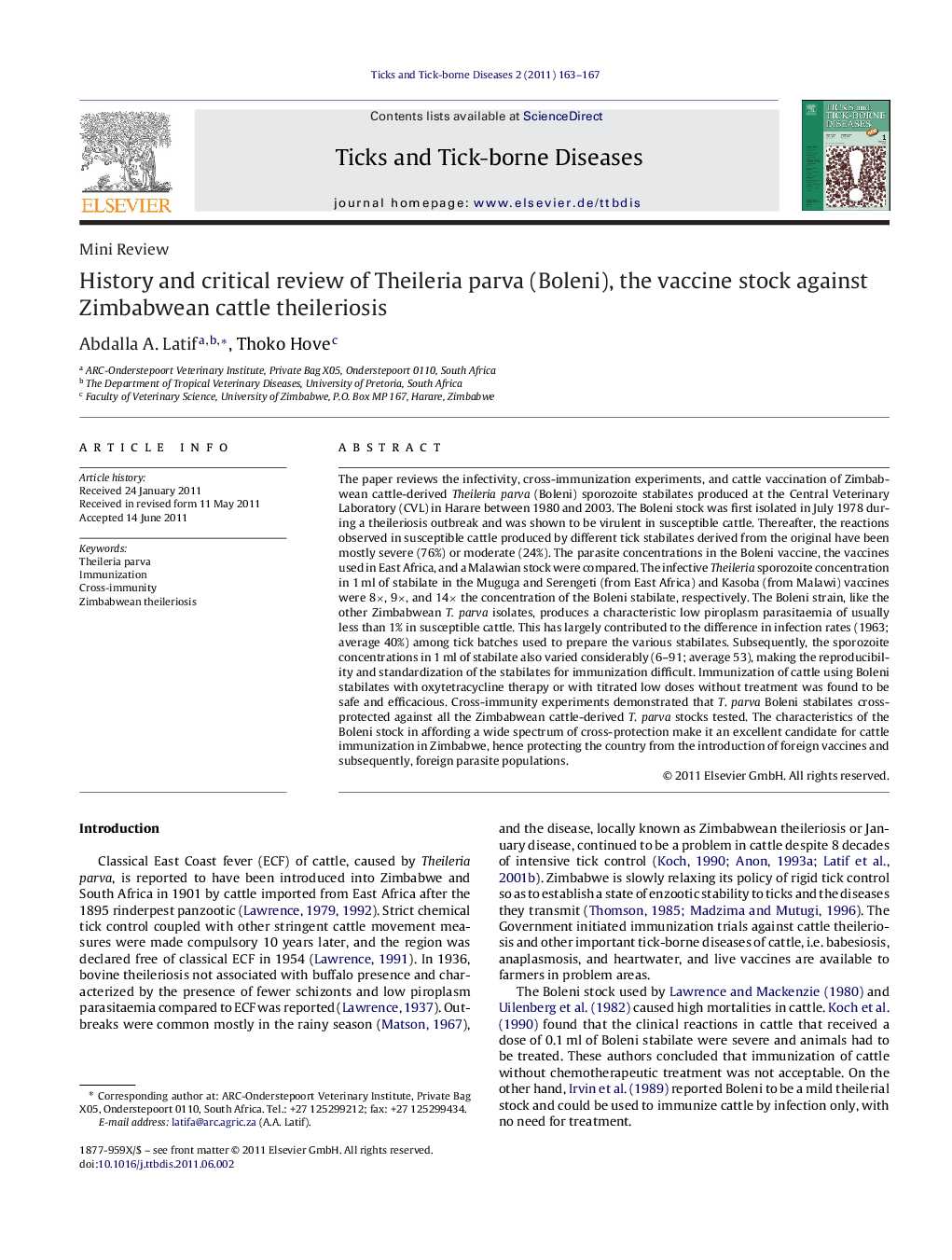| Article ID | Journal | Published Year | Pages | File Type |
|---|---|---|---|---|
| 2473955 | Ticks and Tick-borne Diseases | 2011 | 5 Pages |
The paper reviews the infectivity, cross-immunization experiments, and cattle vaccination of Zimbabwean cattle-derived Theileria parva (Boleni) sporozoite stabilates produced at the Central Veterinary Laboratory (CVL) in Harare between 1980 and 2003. The Boleni stock was first isolated in July 1978 during a theileriosis outbreak and was shown to be virulent in susceptible cattle. Thereafter, the reactions observed in susceptible cattle produced by different tick stabilates derived from the original have been mostly severe (76%) or moderate (24%). The parasite concentrations in the Boleni vaccine, the vaccines used in East Africa, and a Malawian stock were compared. The infective Theileria sporozoite concentration in 1 ml of stabilate in the Muguga and Serengeti (from East Africa) and Kasoba (from Malawi) vaccines were 8×, 9×, and 14× the concentration of the Boleni stabilate, respectively. The Boleni strain, like the other Zimbabwean T. parva isolates, produces a characteristic low piroplasm parasitaemia of usually less than 1% in susceptible cattle. This has largely contributed to the difference in infection rates (1963; average 40%) among tick batches used to prepare the various stabilates. Subsequently, the sporozoite concentrations in 1 ml of stabilate also varied considerably (6–91; average 53), making the reproducibility and standardization of the stabilates for immunization difficult. Immunization of cattle using Boleni stabilates with oxytetracycline therapy or with titrated low doses without treatment was found to be safe and efficacious. Cross-immunity experiments demonstrated that T. parva Boleni stabilates cross-protected against all the Zimbabwean cattle-derived T. parva stocks tested. The characteristics of the Boleni stock in affording a wide spectrum of cross-protection make it an excellent candidate for cattle immunization in Zimbabwe, hence protecting the country from the introduction of foreign vaccines and subsequently, foreign parasite populations.
